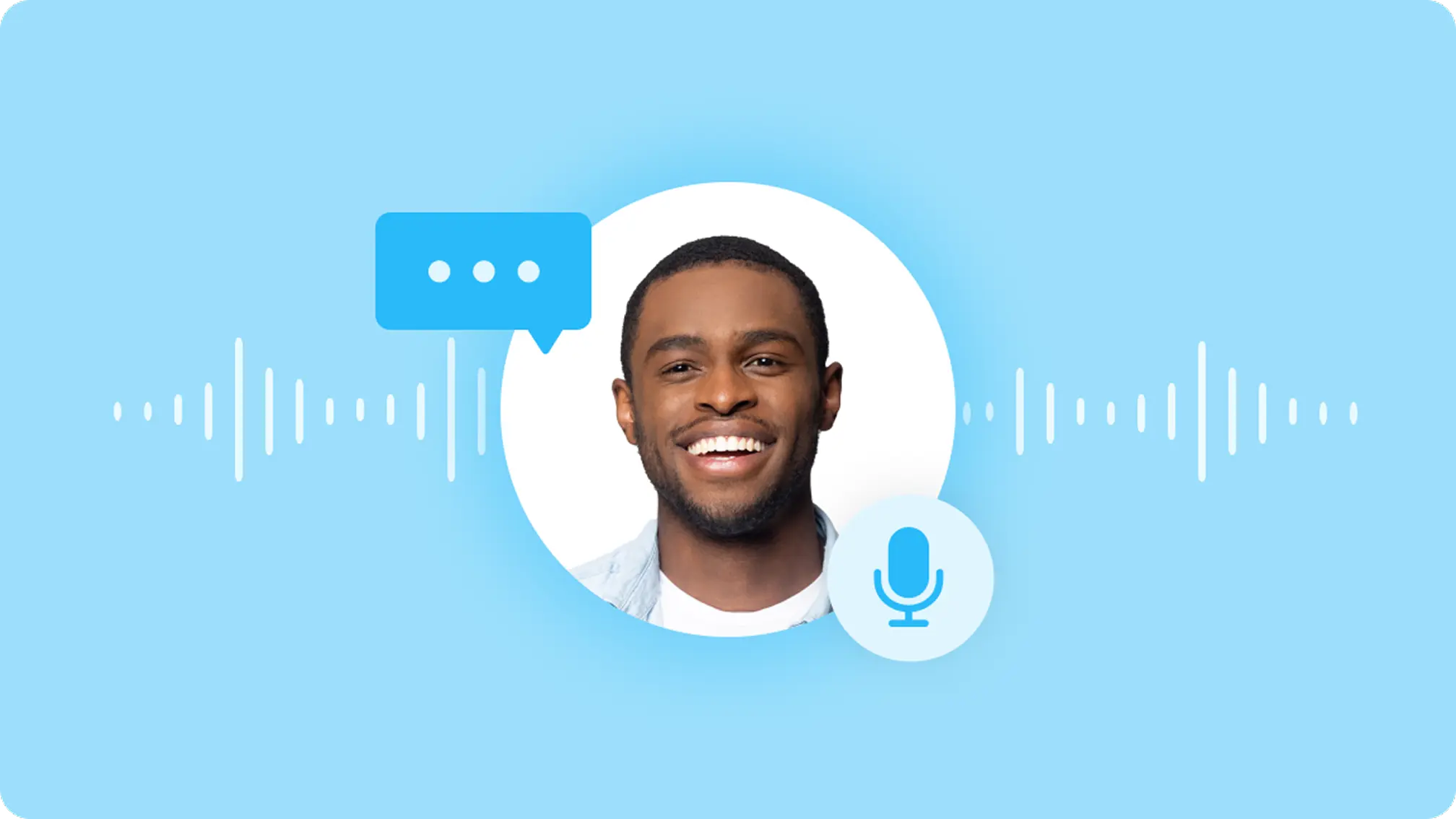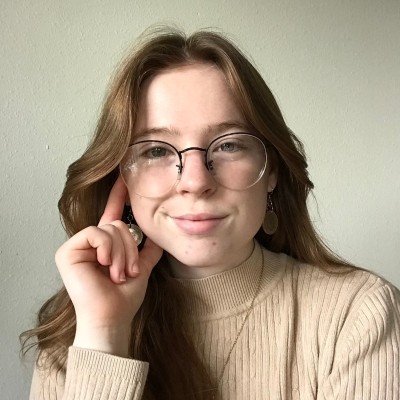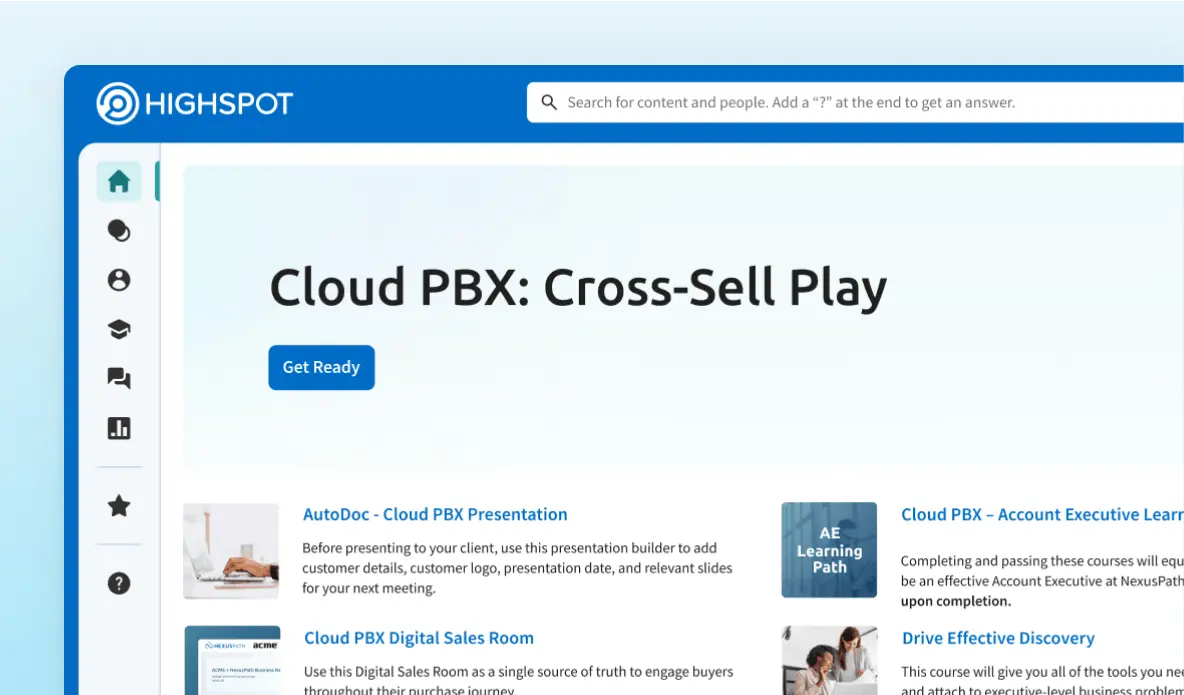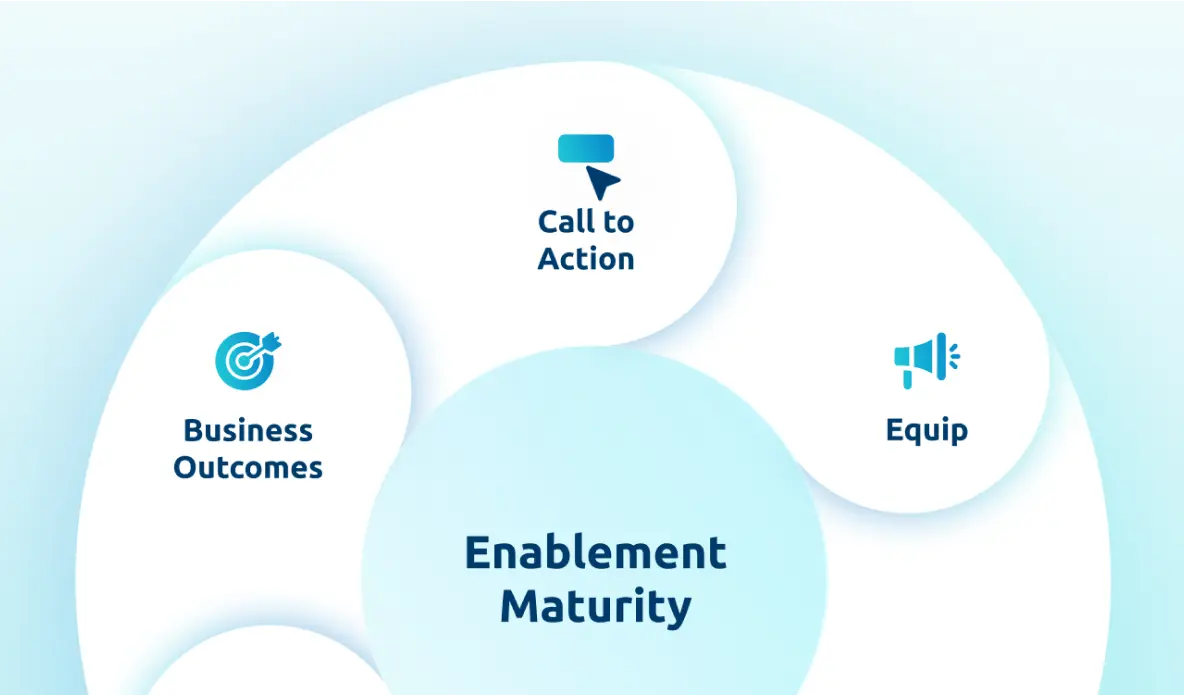‘According to research from Gartner, 77% of sellers report that they struggle to complete their assigned tasks efficiently. So, how can enablement help cut through the noise and maximize rep efficiency to drive business results?
Riley Rogers: Hi, and welcome to the Win-Win podcast. I’m your host, Riley Rogers. Join us as we dive into changing trends in the workplace and how to navigate them successfully.
Here to discuss this topic is Kim Engebretson, manager of sales enablement at Protegrity. Thank you so much for joining us, Kim. We’re super excited to have you here. As we get started, I’d love if you could just run us through yourself, your background and your role. Great. Thanks
Kim Engebretson: Riley. I’m happy to be here and excited as well.
So, as you mentioned, I’m the manager of sales enablement at Protegrity. Which is a data-centric security company, which is part of the cybersecurity industry. I’ve actually been in sales ops and enablement for more than 25 years of my career over a host of different industries, most of which was in medical devices than telecommunication, and that ultimately brought me here to Protegrity.
But I would have to say that my earliest career back in aerospace and defense really contributed to my love of sales enablement because I learned about manufacturing processes, project management, and I always take that lens of a process when I bring it to looking at a sales process to say, can we refine it?
Is it the most efficient? Are there things that we can do? So always using a continuous improvement mindset. So it’s really been fundamental in how I approach most of my sales enablement projects.
RR: Amazing. Thank you for that background. I love the thorough experience that kind of leads you to where you are today, and it’s part of the reason that we’re super excited to have you today is you bring a really well-informed perspective to the table and looking at your background, it’s clear that you have extensive experience, not only as an enablement leader, but in all of the different skills that make a strong enablement leader.
So as the enablement landscape has kind of continued to evolve over the years, I’m curious how you’ve seen the challenges go to market teams face evolve, and then maybe what you’re seeing is the most pressing today.
KE: Yes. Well, as I mentioned, with having a pretty long career thus far, I’ve come through a couple major milestones.
The introduction of the internet, digital transformation. I mean, I was in sales enablement when people had to call in a paper order was processed. So as you can mention, this is a big evolution that we’ve moved to such automation, such efficiency, and so from a go to market perspective, sales hasn’t changed.
From the standpoint that a seller must know their product and service, they must bring value to the table so that the customer really perceives them as adding value and being a consultant, being a partner, and making the right business decision. But what has changed dramatically, even in the last five years and is continuing to move at an amazing pace, is that buyers don’t really wanna engage with the seller until it’s much further along in the process.
So the buying cycle is still a pretty long period of time, but the sales cycle when the customer and the seller engage is really much further down the pipeline than it normally was. So from a go-to market perspective, our sellers have to know that and know what assets, what webinars, what podcasts, what materials has the prospective customer engage with through their self discovery.
And it really precedes AI. But this desire to say, let me educate myself in what’s available before I start talking to a prospective vendor. And from that standpoint. When we do have that first engagement, it’s got to be solid. It’s got to be really a opportunity where we distinguish ourselves from the other vendors that the prospect or customer might be thinking about talking to.
RR: Yeah, I think that’s certainly a common challenge that a lot of businesses are seeing, and I think that need to be agile, to be effective, to be efficient in that moment where you’re allowed as a seller, to have that first touch with a buyer is so crucial. I know that kind of as a solution to that. Sales efficiency is kind of a key priority for you.
So can you maybe talk us through why sales efficiency is a priority and then how you’re focusing on that and what initiatives you’re using to help you achieve it?
KE: Sure. So understanding the prospect. So we have a really strong demand gen organization that is trying to provide leads or prospective leads to our sales team, but that still requires that our sellers really get to know again, who that company is.
What industry are they working in? Who are the decision makers? There’s a considerable amount of research and data accumulation that has to take place so that, again, when that seller has that first opportunity, that phone call, that business meeting, that they come prepared. And I believe that customers also expect.
That individual to come already knowing quite a bit about them, because again, we work under this kind of accelerated cycle. And so the efficiency part is how do we assemble all that information, how do we synthesize it? And then simultaneously using things like our business use cases, our understanding of the industry, how do we prepare our seller so that they’re not having to do that all on their own?
We are providing them those materials and resources so that they can, again, bring their best, you know, representation for that first meeting. So there’s a lot of pressure on that first call, but I think the sales efficiency is building all around, making our sellers. Informed. Knowledgeable and impactful.
RR: Yeah, definitely. I think thinking about that sales efficiency and all the support levers that you’re pulling to help sellers drive it, I’d like to maybe talk about enablement technology and how you’re using that to create efficiency. I know you actually switched off of a previous enablement platform and moved to Highspot just recently last year, so I’d love if you could talk us through maybe what motivated the change, how you reevaluated, and then what that process was like.
KE: Absolutely. I joined Peg in June of last year and it just so happened the sales enablement platform we were using was coming up for an annual renewal. So there was a natural event that said, you know, I’m new in the role. I was given a new responsibility of sales enablement, so let me test. Whether or not we had the right product, right tool for what we needed.
And so I went out and spoke to pretty much the top three or four companies giving our current vendor every opportunity to also come forward and demonstrate what they had that perhaps we weren’t utilizing in that system. So it was really about were there things that we weren’t using, not optimizing in the system.
And it was through that process that really Highspot. Distinguish themselves, and I just emphasized that first meeting being so important and really our account executive came prepared, had done some research, was sharing with us ideas that we hadn’t had, even though I had researched all the vendors independently myself, and so they stood out.
And that continued through the next engagement and the next engagement. And as the account executive brought in other resources from Highspot through the solutions team, everybody came prepared and demonstrated to me an interest. They were interested in what we needed and they wanted to showcase how they thought the Highspot solution could meet the business needs that we defined.
And that really just. Changed the kind of trajectory. So it was up for our incumbent to really lose the business, and unfortunately they did because they didn’t really fight hard enough to sustain it. And again, across the vendors, a lot of common functionality. But it was the way. That the Highspot team was able to really demonstrate what did they think that their solution could do that would be different?
And it was, uh, a couple things. Digital Rooms. It was the close integration with Salesforce. Were, were really two of the key decision makers, the decisions for us.
RR: Wonderful. Well, I first of all am so happy to hear that you had such a fantastic experience with our team, and I think that, you know, kind of speaks to the value of enablement in the work that you do of.
How else are you getting sellers ready to deliver these experiences? And then also congratulations on one year. Super exciting. Just past that mark. So gotta call that out. I’d love to know maybe drilling a little bit further into that process of switching. So when you switch an enablement tech stack, what maybe are some of the best practices that you would share for managing that change and empowering reps through that transition?
Because I know that’s probably not an easy process.
KE: Agreed. That’s probably the biggest challenge with any technology transition is implementation and then change management. So from the implementation side, again, I think Highspot had a great enablement support where the project plan was clear. The kickoff was good.
I did have a partner at the time who was working with me on the transition so that I was able to focus on the enablement side. The other person was able to focus on the content. Implementation. So I would say having a good project team internally was really important because you really wanna have people who can focus on the different elements of that transition.
But the thing I also focused on was ensuring that our sales leaders really understood why we’re making the change. That they were also helping to articulate the business decision and the value. And then it all came down to just communication, really keeping the sales team well informed why we were making the change, what were some exciting things they could look forward to.
And then once we made the change, supporting them through multiple hands-on sessions. So that they could get familiar with the system. And so I was doing, you know, weekly sessions, small group sessions, really to make sure people understood the new navigation, how to find the resources. And then, uh, the big one was introducing the digital rooms.
So it was really just about. Change management 101, communicate, implement, and support.
RR: Yeah. Amazing. I think changes in the tech stack are a pretty common scenario that you’ll encounter, but I feel like there’s not so much in the way of guidance or best practices out there for how to do it, so thank you so much for sharing that.
I’d love to know, maybe just one more question on this topic, in your opinion. What is the advantage of an enablement platform? How does it help you with sales efficiency? And then maybe a little bit, if you can, share about how switching to Highspot helped you amplify that advantage.
KE: Sure. So we were using multiple resources.
Our tech stack is pretty, I should say, it’s either deep or wide, whichever way you want to define it, but the ability to compress and integrate. To demonstrate a seamless experience, whether you’re using Highspot through Outlook or through Salesforce or teams, but trying to minimize that feeling of a seller going to multiple systems to achieve something.
And more importantly, we have our collateral, our marketing content. We have product information, we have sales process information. We have the ability to collect how to information. And so by putting that all into one system, that’s easy to navigate. Is also giving that seller that kind of efficiency, which is if they have confidence that they can come into one system, quickly, find the answer to the question, whether it’s, how do I, what’s the next step?
Particularly for things which maybe they don’t do on a high frequency basis. So they need to come back to how to find that resource. Previously, you know, it was all via SharePoint, which it definitely has some value. But now being able to put everything kind of into one basket, meaning one system, we’re able to provide them, I think a more unified user experience.
And then the efficiency of being able to say, I can do multiple things with this one tool that I previously had to go to, maybe three or four different resources, or even people to find the answer to a question.
RR: Wonderful. Well, I’m so glad that you’re seeing the degree of success that you are already and that the switch has kind of been a fruitful one.
Speaking of some of the work that you and the team have been doing with the platform, we’ve heard that sales plays have been a key lever in helping you improve sales efficiency. So I’d love if you could talk us through how you’re leveraging them to support your sales efficiency initiatives and then how maybe they’re helping you drive.
More consistent execution across your sales teams?
KE: Yeah, absolutely. So as I mentioned previous to me joining the organization a year ago, we didn’t really have a dedicated sales enablement function. Of course, sales enablement was being delivered by different individuals. And so one of the things that was, you know, my primary objective was improve the onboarding experience and then also help document the processes, or in this case, the sales place.
So there really wasn’t a repository or a collection of that. I love the way, it’s what do I need to know, show, say, or do? And I’ve used that so many times, even in my own enablement sessions, because I think that routine, that practice starts to build that understanding of how we break down a sales play.
And so first and foremost, brought the right people together through a series of workshops. So that we could create the sales plays. And so the way we started was we used both industry and business use case as the formula for defining the sales plays, and that enabled the team to kind of hyperfocus on for this specific industry and this specific peg use case or solution.
How can I define the things that that seller would need to know? And so once we produce a couple of sales plays, that made it a lot easier us for us to template that moving forward. And in fact, that’s all been on the like pre-sales side on winning new business. And now we are moving into building sales plays around the post-sales process about customer onboarding and customer engagement and time to first value.
So we’re using those same principles now. Through another portion of the buyer life cycle, so I’m excited to start documenting those processes as well.
RR: Amazing. Well, I love to hear that the no say show do structure is so ubiquitous in enablement at Prote. It’s such a useful framework and it really does work.
Maybe shifting gears a little bit, besides sales plays, we’ve also heard that you’ve had quite a bit of success, as you mentioned earlier, with things like digital rooms, and you’ve achieved an 83% external share. Adoption rate. So I’d love if you could share some best practices for helping reps regularly use external sharing features, and then maybe how you’re seeing that engage buyers.
KE: Digital rooms are by far my favorite. Not only because you can get a little creative, and we’ve created a digital room template for different business use cases or for different customers at the different intervals of where they are in their buyer journey, whether it’s for prospecting or it’s for contract management or responding to a request for proposal.
So we look at each one of those buyer-seller engagements. As a unique opportunity to define a digital room, and they essentially sold themselves. So I think our sales teams immediately got how valuable these could be compared to, you know, the old school method of emailing customers serially, you know, having to search through your email to find out what was the last communication, looking for resources.
And so everybody just really, I think, inherently understood the. Value of a digital room. And again, going back to saying how do we hyper-personalized, how do we customize something for a customer or a prospect, which will help distinguish peg from potentially other vendors that they’re talking to. And in fact, I was onboarding a new solutions engineer just a week or so ago, and when I introduced him to Highspot and the use of digital rooms.
The fact that that individual repeated back to me, oh my gosh, I can see the value of this. I was like, alright, you got it. And so I think that it’s not a leap for people to know how valuable digital rooms can be. And the second part of your question is, you know, how did it when the adoption one is, I think there was genuine need in an interest.
So those people ran toward it. But I hosted a couple enablement sessions and then. I highlighted the individuals who were doing unique things, they really made their personality stand out in the digital room. They added some stuff that sometimes was funny, you know, or engaging. So using successful sellers to showcase best practices to the rest of the team.
I’ve always found that that tends to be more impactful than me sharing my recommendation or even a vendor sharing a recommendation. So when they see another respected seller is doing something and having success with it, then they’re more inclined to say, let me check that out. Let me adopt that practice as well.
And so I hosted a enablement session called the Digital Masterclass. Where we took it to, you know, how can we use some higher end functions and features, and I’ll continue to do that as Highspot continues to release some new features and functionality with the digital rooms.
RR: Well, I love to hear that, especially I feel like the best part of digital rooms is that they kind of marry, flash and function.
So when you can show off a really cool one, everybody’s like, ah, why am I not doing this? And so it seems that’s very much how you’re getting that engine moving. So having heard a little bit about your strategy and the work that you’re doing to drive it, I’d like to know maybe since implementing Highspot, what business results you’ve achieved, any wins, achievements that you’re particularly proud of, programs that you’re running really successfully, that you’d like to share with us.
KE: Yes. Well one is, I, I think just the, the adoption rate that you mentioned and the high rate of external shares is indicative of that. The team has adopted this as a, a distinguishing sales function, so that’s one thing. I did take a look at it, and although I can’t give you very specific numbers, I looked at our pipeline from a year ago, you know, year over year, and what I was able to see was double digit growth in both new opportunities created.
And new opportunities, not only with existing customers, but what we call net new logos. And so, although there’s other contributing factors, I definitely think that the use of the digital rooms has helped advance the opportunity from say, qualification into then our next opportunity stage. And that’s reflective of the fact that that’s when we say, this is when you now create the digital room.
To move a customer from, you know, once we’ve identified there’s a business value that we can deliver to them, is now let’s start to move them into a digital room, start to share more assets and information, which again, can help them inform themselves and be a great place where we can keep a record of recorded meetings, action items, next steps.
And it just helps facilitate, you know, the sales process motion and sales tactics.
RR: Well, I think. To start. That sounds like you’re making amazing progress and I am sure that’s just reflective of the great work that you’re doing. I really appreciate you walking through kind of that enablement action to then this is how we’re seeing that impact on the outcomes that the business really cares about.
And it seems like to your point, the data is reflecting the value of your work. So speaking of kind of seeing that data and being able to. Validate the work that you’re doing. I’ve heard that you’re currently working, as you mentioned on that integration between Salesforce and Highspot. So as you’re making progress on that, I, I’d love to know what value you’re seeing in the integration and then as you’re going, what outcomes you’re hoping to achieve down the line.
KE: Yeah, absolutely. So right now we are actually in production. Our integration’s complete. We just haven’t rolled it fully out to the organization. As I continue to fine tune a few things. What I think I’m more excited about now is that it wasn’t how I thought we would be using it. Let me clarify that by saying, you know, floating content, floating recommended sales plays over to the opportunity or from Highspot to Salesforce is.
You know, one of the things we expected, but it was a sales operations leader who said, well, can we give them the process guidance as well? And I said, well, sure we can. So this was something that we’ve implemented and we’re now testing out, but this is where I’m also floating over the how to guide, on how to perform the next step.
What are the things that you need to do from a Salesforce. Process standpoint as one of the recommended assets. And although we had those materials and we’ve had a lot of how to guides produced in the past, it was always the challenge of somebody going to find the guide at the time that they needed it.
And by using the Highspot integration. It is surfaced right there on the opportunity. So it’s literally, you know, look at the opportunity, click on the resource guide, and now we can give them the guidance that they’ve been looking for, or that they maybe stopped doing something and called somebody to get the guidance.
So again, I think that highlights the efficiency because we have sellers all around the globe, and we want them to be able to work and not be delayed in what they’re doing because they’re waiting for somebody to answer a question. If they can get the information right when they need it, and again, at the point of use, which in this case would be within Salesforce, within the opportunity.
So looking forward to releasing that really in the next, uh, week or so, and I’m sure the team is gonna see the value there as well.
RR: Well, I know I, for one, can’t wait to hear about how that goes with the team in the next week. Best of luck to you. But if you’re already finding surprise use cases and additional values popping out at you, I’m sure as sellers are getting in there and using it, you’re gonna find new things pop up that they’re using that you aren’t even expecting.
Well, one last question for you before we let you go. For organizations aiming to improve their operational efficiency through an enablement platform. What is maybe one or two pieces of advice you would offer when selecting that tool to partner with?
KE: It’s a good question. You know, one, I’m gonna point back to what I said in the beginning, which is really trust, maybe your instinct, which is, if the very initial engagement with a prospective supplier is good, that tends to be somewhat indicative that that business relationship will continue on.
If you find that you’re not getting the information. Or you’re struggling to see the value in the tool. It’s not being conveyed to you in a way. That may also be an early indication that, that that could paint how this engagement with that prospective supplier is gonna be so lean into, you know, how does the company represent themselves?
Because if they’re successful using an enablement system, it’s gonna be reflected in their own account. Executives do talk to a couple other, uh, referrals. I think it is also helpful. I don’t think a company’s gonna give you a referral that’s not gonna give you a good assessment. But speaking to other companies that are using the product.
Particularly if they’re in the same industry, I think is beneficial. And then of course, I would ask to really understand what the implementation plan is. So, and do that early enough when you’re doing the vendor review. Not just what is the product solution, but what is their implementation strategy and plan.
How long will it take? And then what is their transition after you have your instance up and running? What are the resources that they provide? And that has also been something that has been really valuable to me, is having the continuing relationship when we transitioned out of our implementation. And then over to the customer support team, CSM.
Um, it’s been a good relationship and that’s how we’re continuing to look at how do we leverage the system? How do we continue to optimize Highspot to get the most value out of it?
RR: Amazing. Well, I think that’s fantastic advice, and I just have to say thank you again, Kim, for joining us. It’s been so lovely to chat with you and I think we’ve got some great best practices to share with our audience. Really appreciate it.
KE: Thanks Riley. I enjoyed being here.
RR: To our audience, thank you for listening to this episode of the Win-Win podcast. Be sure to tune in next time for more insights on how you can maximize implement success with Highspot.




